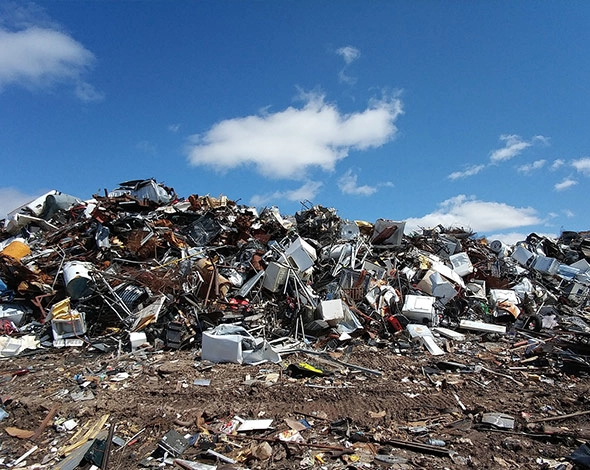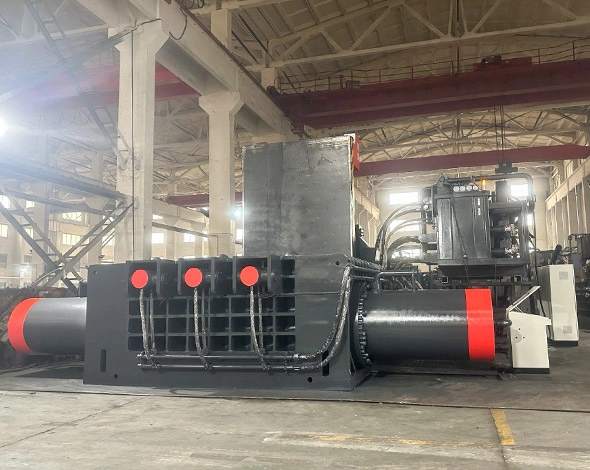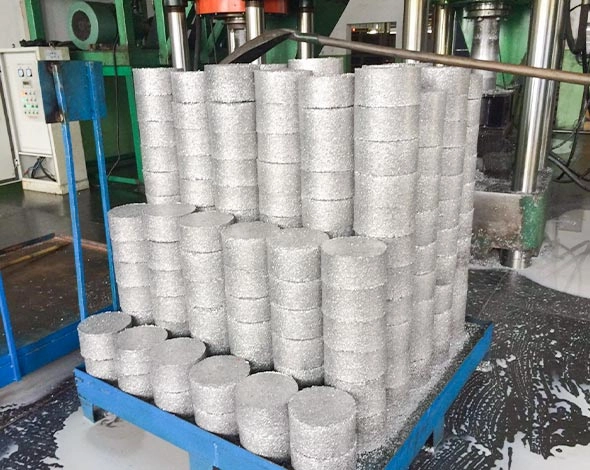Metal recycling is a pivotal component in the sustainable management of resources, offering substantial environmental and economic benefits. Converting waste metals into reusable materials can protect natural resources, reduce energy consumption, and reduce greenhouse gas emissions.
As the demand for metals continues to grow, recycling addresses the challenge of waste and supports a circular economy, making it an essential practice for future sustainability.
Types of Metals Recycled
Metal recycling encompasses various materials, each with unique properties and applications. These metals are broadly categorized into ferrous, non-ferrous, and unique or precious metals, each playing a vital role in the recycling industry.
Ferrous Metals
Ferrous metals, primarily consisting of iron and steel, are distinguished by their magnetic properties and are a staple in the construction, automotive, and manufacturing industries. Steel is one of the materials with the highest recycling rates in the world, recovered from automobiles, construction waste, and household appliances. The recycling and utilization of black metals reduces the demand for raw materials, saves energy, and reduces greenhouse gas emissions.
Non-Ferrous Metals
Non-ferrous metals, including aluminum, copper, lead, zinc, and nickel, do not contain iron, making them non-magnetic and corrosion-resistant. Aluminum is highly sought after for recycling due to its presence in cans, packaging, and construction materials. Copper’s excellent conductivity makes it invaluable in electrical wiring and plumbing. Recycling non-ferrous metals is crucial for protecting natural resources and energy.
Special and Precious Metals
This category includes gold, silver, and platinum, often recovered from electronic waste, jewelry, and industrial catalysts. Due to their economic value, recycling these metals is highly profitable and significantly reduces the environmental impact of mining and processing precious metal ores.
Recycling metals involves processes, from collection and sorting to melting and refining, ensuring that these valuable resources are efficiently recovered and reintroduced into the manufacturing cycle. The continuous growth of the metal recycling industry reflects its importance in achieving environmental sustainability and economic efficiency.
Collection and Sorting
The initial stages of metal recycling, collection, and sorting, are crucial for ensuring the efficiency and effectiveness of the recycling process. These stages determine the quality and purity of the recycled metal.
Collection Methods
Curbside Collection: Many municipalities have curbside recycling programs where residents can place metal items for pickup, often in separate containers or bins.
Drop-off Centers: These centers allow individuals and businesses to bring metal waste directly. They are beneficial for oversized items not accepted in the regular curbside collection.
Commercial and Industrial Collection: Specialized services collect metal scrap from manufacturing, construction sites, and other commercial sources, where large quantities of metal waste are generated.
Sorting Technologies
Once collected, the metals must be sorted, a process that significantly impacts the quality of the recycling output.
Magnets: One of the simplest methods involves using magnets to separate ferrous metals, which are magnetic, from non-ferrous metals.
Eddy Current Separators: These separate non-ferrous metals from waste material. An eddy current induces a magnetic field in non-ferrous metals, propelling them away from other materials.
Infrared Sensors and X-ray Fluorescence (XRF): Advanced sorting technologies like infrared sensors and XRF analyzers can identify and sort metals based on their elemental composition. This is particularly useful for sorting alloys and specific grades of metal.
Challenges and Solutions
Contamination and Mixed Metals: Contamination with non-metallic materials or different metal types can reduce the quality of the recycled product. Advanced sorting technologies and pre-treatment processes are essential to address these issues.
Size and Shape Variability: Small or oddly shaped metal items can challenge automated sorting systems. Ongoing advancements in sorting technology aim to improve the accuracy and efficiency of sorting these materials.
The collection and sorting phase is foundational to the metal recycling process, setting the stage for the subsequent processing and refining stages. By efficiently separating and categorizing metals, recyclers can ensure a high-quality recycled product, optimizing the sustainability and economic viability of the recycling process.
Processing and Refining
After the crucial steps of collection and sorting, the metal recycling process advances to processing and refining, where metals are prepared for reuse. This stage involves several critical processes designed to transform scrap metal into a form as good as new, ensuring it can be utilized in manufacturing with the highest efficiency and minimal environmental impact.
Size Reduction
Shredding: Metal scrap is shredded into smaller pieces, making it easier to handle and process. Shredding increases the metal’s surface area, enhancing subsequent melting processes’ efficiency.
Crushing: Crushing breaks down the material into manageable sizes for certain types of metal scrap, significantly larger pieces.
Detoxification
Removing Contaminants: Before melting, removing any non-metallic materials or hazardous substances attached to the metal scrap is crucial. This may involve processes like washing, chemical treatment, or thermal detoxification to ensure the purity of the metal.
Separating Metals: In some cases, valuable metals are extracted from complex mixtures or alloys through chemical or thermal processes, improving the quality of the recycled material.
Melting and Purification
Furnaces: Metals are melted in large furnaces explicitly designed for different types of metals. The melting process is energy-intensive, but the energy required to recover metals is much less than that needed to produce new metals from ores.
Purification: Various methods are used to purify the molten metal, including electrolysis, filtration, and adding chemical purifiers. This step is critical to ensure that the final product meets industry standards.
Solidification and Shaping
Casting: The molten metal is poured into molds to solidify into ingots, bars, or other shapes suitable for transportation and further processing in manufacturing.
Rolling and Extrusion: For some applications, the metal is further processed through rolling or extrusion to produce sheets, rods, or specific profiles required by manufacturers.
The processing and refining stages are pivotal for transforming scrap metal into high-quality raw materials ready to produce new products. This phase not only conserves natural resources and energy but also plays a significant role in reducing industrial waste and emissions.
The Role of Technology in Metal Recycling
The advancement of technology has dramatically changed the metal recycling industry, making processes more efficient, cost-effective, and environmentally friendly. These technological innovations span the entire recycling chain, from collection and sorting to processing and refining, enhancing the ability to recover a greater quantity and quality of recycled metals.
Advances in Sorting Technology
Infrared Sensors: These sensors can detect different metals based on their specific infrared signatures. This technology allows for the precise sorting of metals, increasing the purity of recycled materials.
X-ray Fluorescence (XRF): XRF analyzers are instrumental in identifying the elemental composition of metal scrap. Recyclers can more accurately sort and process materials by determining the exact type of metal, and optimizing the value of the recycled output.
Robotic Sorting Systems: Equipped with advanced sensors and machine learning algorithms, robotic sorters can identify and separate metal scrap at high speeds, improving efficiency and reducing the need for manual labor.
Energy-efficient Melting Technologies
Electric Arc Furnaces (EAF): EAFs are more energy-efficient than traditional blast furnaces and are particularly suited for melting scrap steel. They can operate on 100% recycled steel, significantly reducing the carbon footprint of steel production.
Induction Furnaces: For non-ferrous metals like aluminum and copper, induction furnaces offer an efficient and precise melting process that minimizes energy consumption and metal loss.
Innovations in Processing and Refining
Laser-Induced Breakdown Spectroscopy (LIBS): This technology offers rapid analysis of metals at the refining stage, ensuring that the composition of the recycled metal meets strict specifications.
Electrolytic Refining: For metals like copper, electrolytic refining can achieve high purity by using an electrical current to remove impurities. This method is both efficient and environmentally friendly.
Enhancements in Material Recovery
Hydrometallurgical Processes: This includes using aqueous solutions to recover metals from waste, beneficial for precious and specific non-ferrous metals. These processes can extract metals with high efficiency and minimal environmental impact.
Pyrometallurgical Recovery: Advances in high-temperature processes allow for the recovery of metals from complex waste streams, such as electronic waste, by incinerating materials to recover metals that would otherwise be difficult to separate.
The Future of Metal Recycling
The future of metal recycling is poised for transformation, driven by technological innovations, evolving market demands, and increasing environmental awareness. As the global population continues to grow and resources become more scarce, the role of metal recycling in sustainable development and the circular economy becomes increasingly critical.
Here are some key trends and developments expected to shape the future of metal recycling.
Emerging Trends and Technologies
Artificial Intelligence (AI) and Machine Learning: AI and machine learning are expected to revolutionize the sorting and processing stages of metal recycling. These technologies can improve the accuracy of sorting mixed metals and enhance process efficiency, reducing costs and increasing the yield of high-quality recycled metals.
Blockchain for Supply Chain Transparency: Implementing blockchain technology can provide a transparent and secure way to track the lifecycle of metal recycling. This could improve supply chain efficiency, reduce fraud, and ensure the integrity of recycled materials, making it easier to meet regulatory requirements and consumer demand for sustainable products.
Advanced Materials Recovery: Research into new methods for recovering precious and rare metals from electronic waste is ongoing. Innovations in this area could vastly improve the efficiency and environmental impact of e-waste recycling, a rapidly growing segment of the recycling market.
Impact of Global Trade and Policies
International Regulations and Standards: The tightening of international regulations on waste import and export is forcing countries to develop more robust domestic recycling industries. This could increase investment in recycling technologies and infrastructure, promoting a more localized and sustainable approach to metal recycling.
Incentives for Sustainable Practices: Governments and organizations worldwide are implementing policies and incentives to promote recycling and using recycled materials. These measures are expected to encourage innovation and investment in the recycling sector, driving further improvements in technology and processes.
Sustainable Practices and Circular Economy
Design for Recycling: There is a growing emphasis on designing products with their end-of-life in mind, making them easier to recycle. This approach can significantly increase the efficiency of recycling processes and the quality of recycled materials.
Circular Economy Initiatives: The concept of a circular economy, where resources are reused and recycled continuously, is gaining traction. Metal recycling is a critical component of this model, as it provides a way to conserve resources, reduce waste, and minimize environmental impact. Companies and governments are increasingly adopting circular economy principles, which could dramatically increase the demand for recycled metals.
Conclusion
Metal recycling is a cornerstone of sustainability, conserving resources, and reducing environmental impact. Technological advancements and global efforts are making it more efficient and widespread. As we move towards a circular economy, the importance of recycling grows, emphasizing the need for continued innovation and collective action. Metal recycling preserves precious resources and embodies a commitment to a sustainable future for all.



